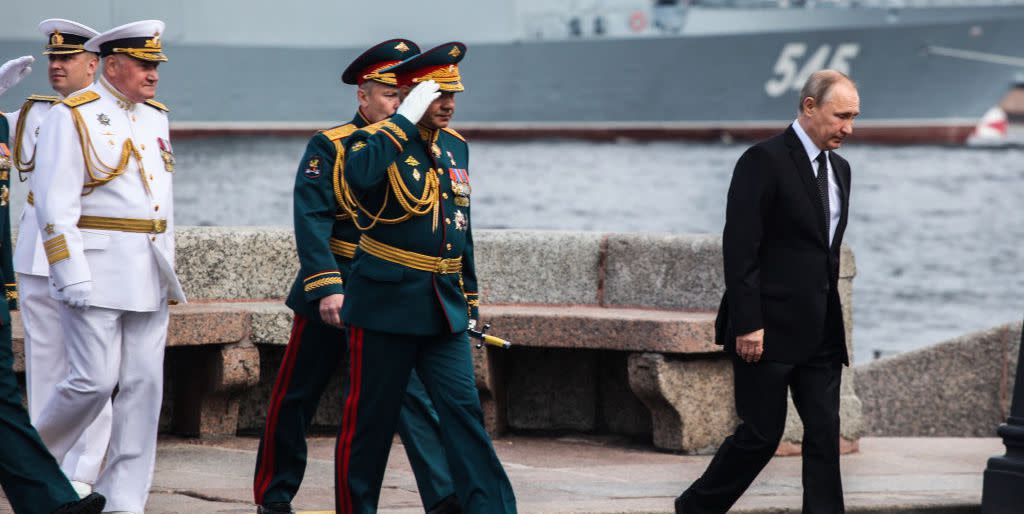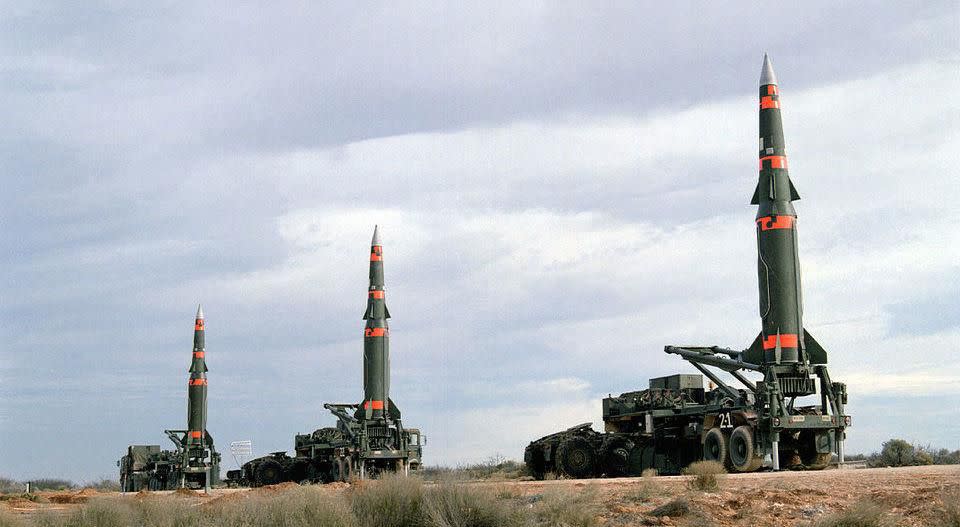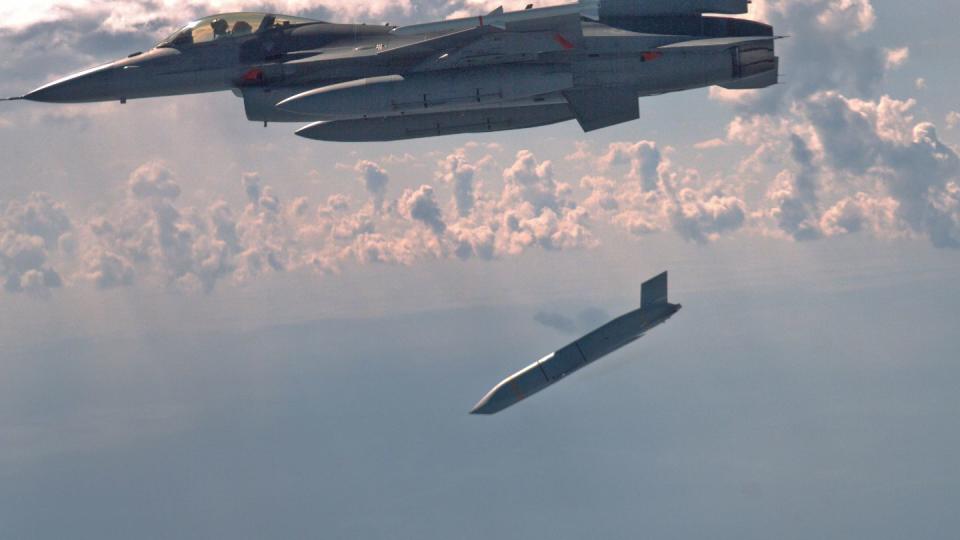Putin Just Threatened the U.S. with New Nukes—But He Actually Backed Himself into a Corner

Russian President Vladimir Putin has threatened to target the U.S. with nuclear-tipped missiles capable of quickly striking the continental United States.
The threat comes on the heels of an announcement by the United States that it plans to withdraw from a key arms control treaty-one that kept America from deploying missiles in Western Europe. A report by Reuters quotes Putin as claiming Russia will counter any U.S. deployment of medium to intermediate-range cruise or ballistic missiles by deploying Russian missiles closer to the U.S., fielding missiles able to hit the U.S. faster than Russia's current weapons, or both.
But let's back up a moment: America's stated reason for quitting the treaty is that Russia violated the agreement with its secret development of a missile banned by the treaty, something that was discovered by U.S. and European intelligence. That may prove to be a serious strategic blunder by Putin-and this new threat is another. Here's why.
Cold War Redux

In the late 1970s, at the height of the Cold War, the Soviet Union deployed the new SS-20 (NATO code name: Sabre). It was an intermediate range, nuclear-tipped ballistic missile. The weapon had the legs to strike European countries throughout NATO, but lacked the range to hit the United States or Canada.
The United States and NATO replied by fielding their own intermediate-range nuclear missiles: the Pershing II ballistic missile and a land-based version of the Tomahawk cruise missile, called Gryphon. It didn't take long for the USSR to realized its attempt to intimidate NATO backfired. While the Soviet SS-20 could intimidate Europe, it couldn’t reach Washington D.C. Meanwhile, the new Pershing II could reach Moscow in just eight minutes, a capability the United States didn’t have before. Eight minutes was too little time for any government to react to a nuclear strike and the Soviet Union risked its leadership being vaporized in a surprise attack before it could authorize a counterstrike.
The 1987 INF Treaty outlawed land-based intermediate range missiles in U.S. and Soviet (later Russian) inventories. Bu in 2014, the U.S. announced it had picked up on Russia’s secret development of a missile in violation of the INF Treaty. Russia refused to acknowledge the missile, 9M729, was in violation of the agreement, and so the U.S. announced its intention to leave the treaty in February 2019.
Never Get Into a Land-Based Missile War in Asia

Russia’s first mistake here was in developing the 9M729 for land. The INF Treaty bans only land-based medium and intermediate range missiles (nuclear or conventional, since it is easy to swap warheads). The agreement allows for sea and air-based missiles.
The U.S. has large inventories of both, including the Navy’s Tactical Tomahawk, which is deployed on submarines and surface ships, and the Air Force’s bomber-launched Joint Air Surface Standoff Missile-Extended Range (JASSM-ER). Russia, on the other hand, is primarily a land power and doesn’t have the large numbers of submarines and bombers that American can boast. So, instead of going the expensive, legit route of building new surface ships or bombers, it would appear that Putin decided to cheat.
Russia’s second mistake was to allow the U.S. to leave the INF Treaty. Suppose the Americans reintroduce intermediate=range missiles into Western Europe to counter Russia's 9M729 (and there are reportedly up to 64 new cruise missiles already in Russian military service). Once again, Russia will face the same problem: Moscow under threat of a lightning-fast strike. Rather than make Russia more secure, Putin and his new missiles are on the brink of making the country even less secure.
Could Putin follow up on his threat to target the USA? In the post-Cold War 21st century, Russia is unlikely to find countries willing to host nuclear missiles pointed at the United States and incur America's wrath. That goes for even Cuba, whose security Russia no longer guarantees. This whole thing is doubly ironic, given that land-basing is what got Putin into this problem to begin with.
One option is for Russian Navy submarines armed with cruise missiles, including the Zircon hypersonic missile, to patrol closer to North America. In the meantime, new American missiles in Western Europe would remain. In the event of a nuclear war the U.S. would still use those missiles, vaporizing Moscow in as little as eight minutes.

Vladimir Putin has dug a pretty big hole for himself. An attempt to go around the back of a major treaty that actively made his country safer has ended up sinking the treaty. Rather than endure a humiliating climb-down that would involve admission of cheating and the destruction of the new missiles, Putin is blustering new threats. The end of the INF Treaty could mark a major return to Cold War-level relations between both countries--and new nuclear threats that make both countries less safe.
('You Might Also Like',)

